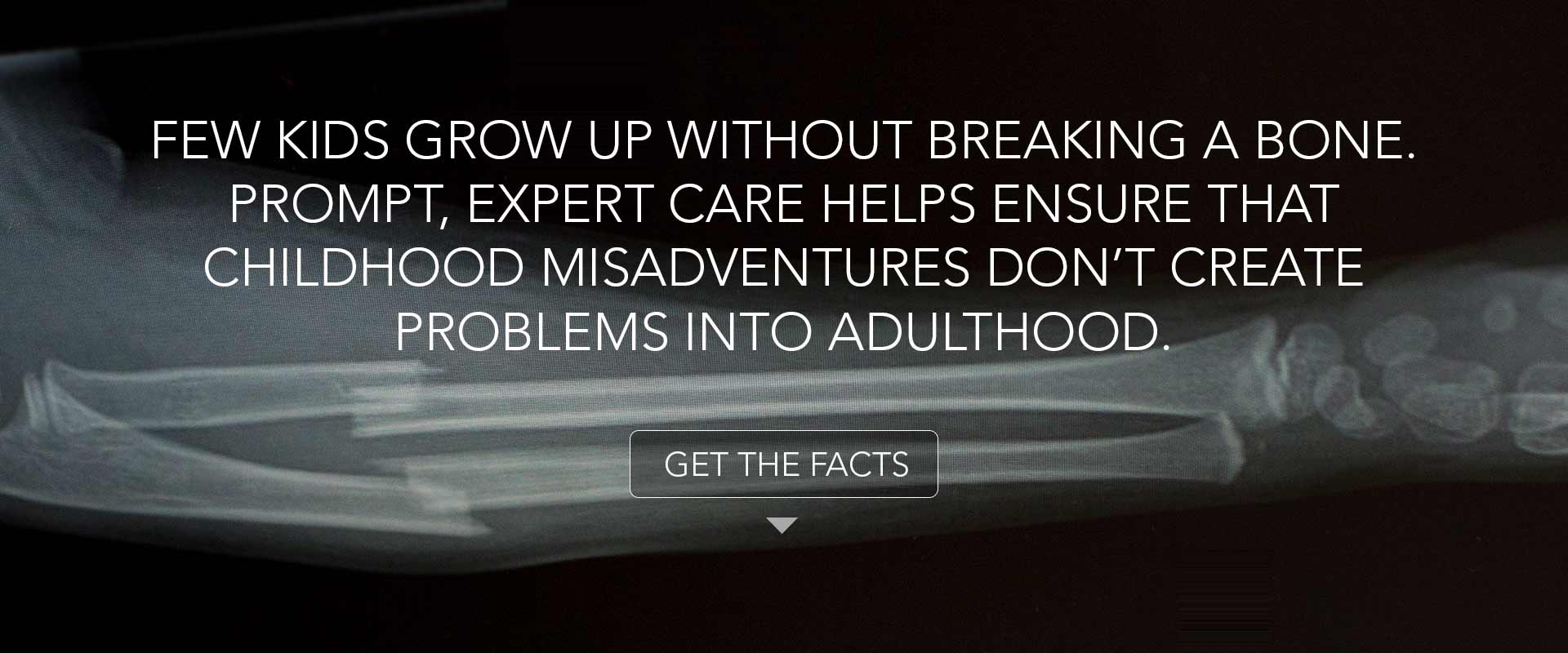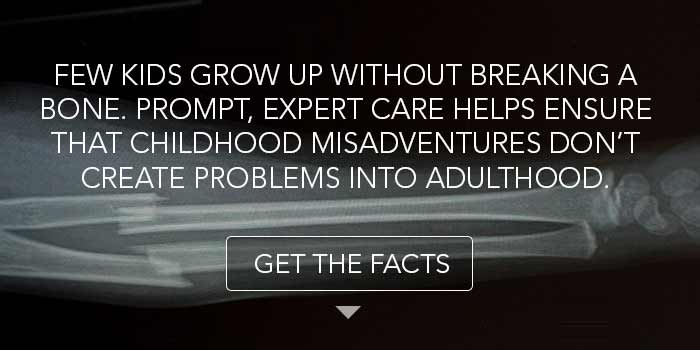Home » Articles » Facts About Broken Bones: Dangers and Treatments
Facts About Broken Bones: Dangers and Treatments
- Few kids grow up without breaking a bone.
- Your child may have a broken bone if there was a snap or grinding noise; if the limb doesn’t look straight; if there is swelling, bruising, tenderness or a feeling of “pins and needles;” or if it’s painful to put weight on the injured area or move it.
- A broken bone is a medical emergency.
- A pediatric orthopaedic specialist understands the unique anatomy of kids and knows the right treatments in order to prevent problems as a child grows.
- When a child takes a fall, they may hurt their growth plate. Growth plates, located near the ends of long bones, help regulate and determine a bone’s shape in adulthood. The growth plate stays open until age 15 for girls and age 17 for boys.
- Growth plates are very soft and vulnerable to fracture.
- Growth plates heal very quickly, which means there is a very short window to set broken bones correctly. Ideally, a growth plate fracture should be set within a week of injury. After that, surgery is necessary to prevent a life-long deformity.
- A broken bone takes time to heal and may often require a cast. Sometimes a splint is placed before a cast.
- Once a bone is healed, the cast will be removed with a small electrical saw. The saw blade isn’t sharp—it has a dull, rounded edge that vibrates up and down. This vibration is strong enough to break apart the fiberglass or plaster but won’t hurt skin.
- Once the cast is off, the injured area will probably look and feel different. The skin will be pale, dry or flaky; the hair will look darker; and the muscles in the area will look smaller or thinner. This is all temporary.
- If it seems like a mild injury and not a broken bone, parents can apply ice, provide a temporary splint and check in with their child’s pediatrician the next day.














